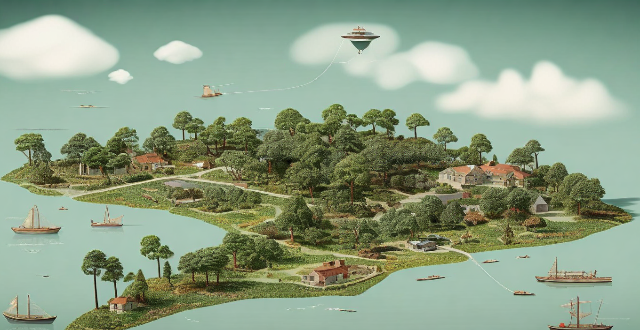Green spaces are crucial for making cities more adaptable to climate change. They mitigate the heat island effect, improve air quality, enhance biodiversity, reduce flood risks, and provide recreational opportunities. By prioritizing green spaces, cities can become more resilient and adaptable to climate change challenges.

Role of Green Spaces in Making Cities More Adaptable to Climate Change
Green spaces play a crucial role in making cities more adaptable to climate change. They provide numerous benefits that help mitigate the negative impacts of climate change on urban areas. This article will discuss the various ways in which green spaces contribute to the adaptation of cities to climate change.
1. Mitigating Heat Island Effect
One of the significant challenges faced by cities due to climate change is the heat island effect. Green spaces can help mitigate this effect by providing shade and reducing surface temperatures. Trees, shrubs, and other vegetation absorb solar radiation and release it as latent heat through transpiration, cooling the surrounding air. This helps reduce the overall temperature of urban areas, making them more comfortable for residents and reducing energy demand for cooling.
2. Improving Air Quality
Cities often suffer from poor air quality due to emissions from vehicles, industries, and other sources. Green spaces act as natural air filters, trapping pollutants such as particulate matter, nitrogen oxides, and sulfur dioxide. Plants absorb these pollutants and release oxygen, improving the overall air quality of urban areas. This is particularly important for cities adapting to climate change, as poor air quality can exacerbate health problems associated with extreme weather events.
3. Enhancing Biodiversity
Green spaces provide habitats for a variety of plant and animal species, enhancing biodiversity within cities. This is essential for adapting to climate change, as diverse ecosystems are more resilient to environmental changes. Green spaces also serve as corridors for wildlife movement, allowing species to migrate and adapt to changing conditions. By protecting and restoring urban ecosystems, cities can ensure the long-term survival of local flora and fauna.
4. Reducing Flood Risks
Climate change has led to an increase in extreme weather events, including heavy rainfall and flooding. Green spaces can help reduce the risk of flood damage in cities by acting as natural sponges. Soil and vegetation absorb excess water, reducing runoff and preventing flooding. This is particularly important for cities located near rivers or coastlines, where rising sea levels and storm surges pose significant threats.
5. Providing Recreational Opportunities
Green spaces offer numerous recreational opportunities for city residents, promoting physical activity and improving mental health. This is crucial for adapting to climate change, as stress and anxiety related to environmental issues can have negative impacts on well-being. By providing access to nature and outdoor activities, green spaces help build community resilience and enhance the overall quality of life in urban areas.
In conclusion, green spaces play a vital role in making cities more adaptable to climate change. They mitigate the heat island effect, improve air quality, enhance biodiversity, reduce flood risks, and provide recreational opportunities. By prioritizing the protection and expansion of green spaces, cities can become more resilient and adaptable to the challenges posed by climate change.